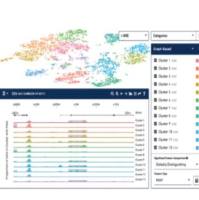The sequencing of the human genome inaugurated a new era in both fundamental and applied genetics. At the same time, the emergence of new technologies for probing the genome has transformed the field of pharmaco-genetics and made personalized genomic profiling and high-throughput screening of new therapeutic agents all but a matter of routine. One of these technologies, molecular combing, has served to bridge the technical gap between the examination of gross chromosomal abnormalities and sequence-specific alterations. Molecular combing provides a new perspective on the structure and dynamics of the human genome at the whole genome and sub-chromosomal levels with a resolution ranging from a few kilobases up to a megabase and more. Originally developed to study genetic rearrangements and to map genes for positional cloning, recent advances have extended the spectrum of its applications to studying the real-time dynamics of the replication of the genome. Understanding how the genome is replicated is essential for elucidating the mechanisms that both maintain genome integrity and result in the instabilities leading to human genetic disease and cancer. In the following, we will examine recent discoveries and advances due to the application of molecular combing to new areas of research in the fields of molecular cytogenetics and cancer genomics.






